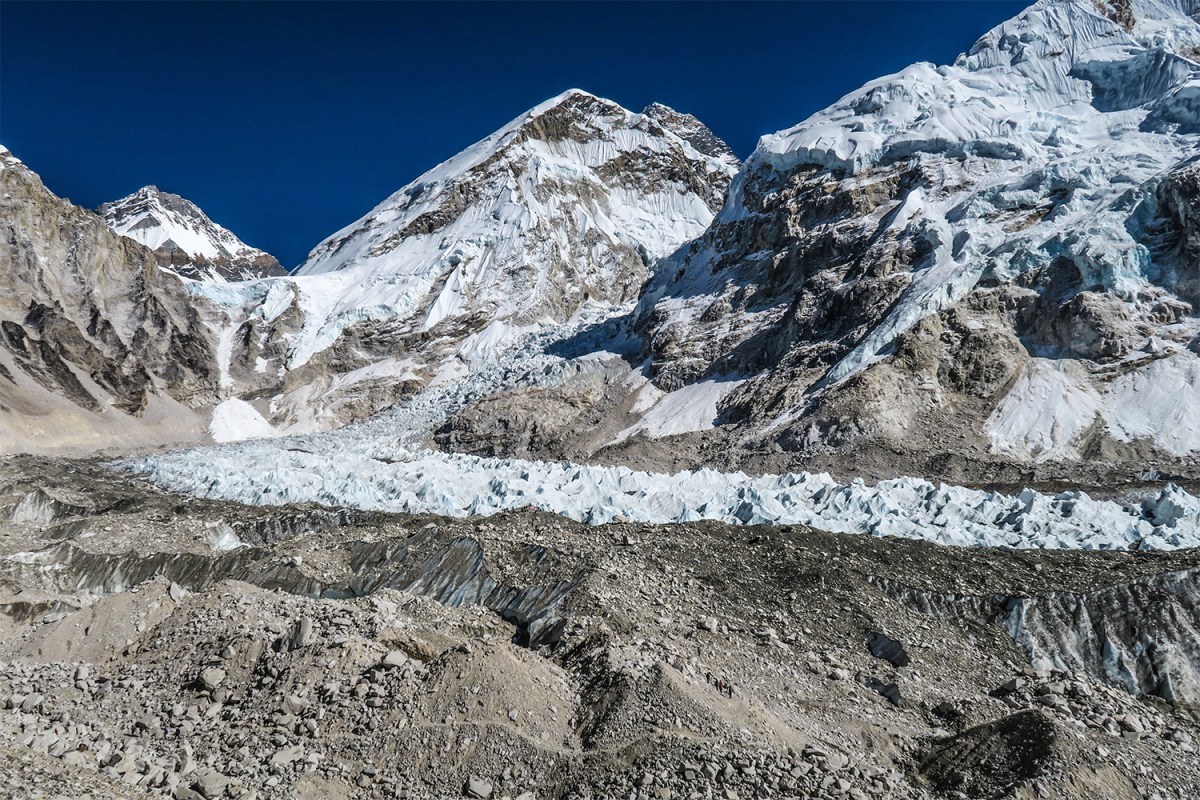“With climate change studies, it’s always bad news,” says Joshua Maurer, a Ph.D. candidate at Columbia University, in Outside.
Today’s even-worse-than-usual news: The glaciers across the Himalayas are melting much faster than expected, leading to fears of both floods and eventual drought, according to a new study led by Maurer and published Wednesday in the journal Science Advances.
The study “analyzed 40 years worth of satellite images of around 650 glaciers across more than 1,200 miles of India, China, Nepal, and Bhutan,” writes Outside, some of which are recently declassified U.S. spy satellite images. On average, those glaciers have been “losing the equivalent of more than a vertical foot and a half of ice each year since the turn of the millennia — which is twice the rate of melting between 1975 to 2000.”
To put that in perspective, as the New York Times writes, these glaciers “are considered the water towers of Asia and an insurance policy against drought.” Now that they’re losing around eight billion tons of water every year (the equivalent of 3.2 million Olympic-size swimming pools), those who live in the region are threatened with serious flooding and then, once the glaciers shrink enough, water shortages.
“Probably the most surprising thing [we found] would be the fact that we see such a similar amount of glacier melting across such a large and climatically complex region,” says Maurer, according to Outside. “That highlights the fact that there’s an overarching climate force affecting all these glaciers similarly.”
In other words, this is yet another instance of climate change already having a massive effect on the planet. But this time, instead of simply hurting the environment, it could directly affect up to two billion people.
Editor’s Note: RealClearLife, a news and lifestyle publisher, is now a part of InsideHook. Together, we’ll be covering current events, pop culture, sports, travel, health and the world. Subscribe here for our free daily newsletter.
Thanks for reading InsideHook. Sign up for our daily newsletter and be in the know.


















